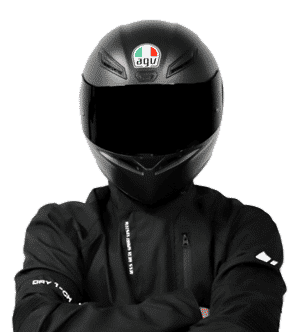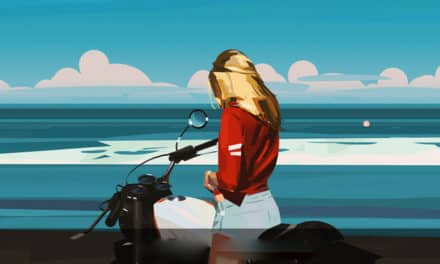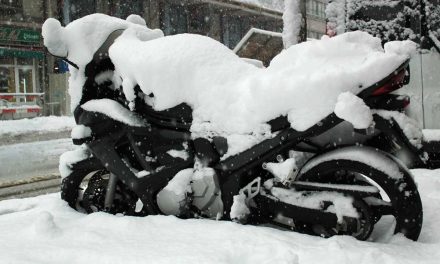You’ve got your motorcycle training class booked and you’re left asking yourself, how is it going to feel riding a motorcycle for the first time? What emotion will win out, fear or excitement? Will I be comfortable on my bike, or will I need to adjust? How do I even start? Is it as easy as it looks? All of these questions are probably swarming your brain like an army of invading bees buzzing around. Let’s talk about it!
The feeling is best described as exhilarating and liberating when you ride a motorcycle for the first time. There are so many new smells, vibrations, noises and feelings that are rushing through your body as you cut through the air.
Your brain will try to keep up with all of your surroundings and you will be put into a state of hyper-focus. You’ll need that hyper-focus as it will be a bit daunting with all of the new levers, pedals, buttons, and gadgets. Believe me, it’s not that difficult. Let’s take a look at some of those items below and get you feeling exhilarated and liberated.
How do you get on a motorcycle?
This question may sound ridiculous, but the truth is that it is so easy to mount a motorcycle the wrong way and then end up falling to the ground. Your bike could end up falling and getting scratched up or dented, and in some cases, it could end up on top of you. So how do you get on a motorcycle safely?
Your bike should be leaning left with the steering turned to the left. This is because you want your steering wheel to face the same direction as the kickstand, and turning it left engages the steering lock. To begin, walk up to your bike on the left side. Take hold of both handlebars and use your right hand to engage the front brake. At this point, you will be leaned over your bike and using the bike for stability.
Next, you will swing your right leg up and over your motorcycle’s seat very carefully, being careful not to get caught up on anything or lose your balance. You should still be holding on to the front brake lever.
Now that you are on your motorcycle, you will straighten out the handlebars and use your left foot to kick up the kickstand. You should have a foot on either side of the bike to handle the weight of it while you are still not moving. Now you can release the brake and you are ready to start up your bike!
What are the main controls?
Although some older model motorcycle controls will vary, most modern bikes have the same general setup as far as controls go. There are left-hand controls, right-hand controls, and foot controls. Although many people see bikers riding down the road on their motorcycles and assume all there is to it is to rev the engine or push the brake there are actually many controls that are constantly being maneuvered and manipulated to keep the machine running smoothly.
Right Side Controls
The right handlebar has the throttle, front brake control, kill switch, start switch, and usually the right turn signal switch. The throttle is on the handle. You turn the handle to open and close the throttle to allow for acceleration. The front brake lever is located in the same area it would be on a bicycle, right in front of the throttle.
The kill switch can turn the bike off in an emergency, and it needs to be in the “On” position to start the bike. The start button needs to be pushed after turning the key and while holding the clutch and brakes.
Left Side Controls
The left side of your handlebars includes the clutch lever, your headlight switch, the left turn signal switch or both turn signal switches, and the horn button. The clutch is what will engage and disengage the transmission for starting the bike and shifting.
Foot Controls
The left side of your motorcycle includes the gear shifter. In cars, you would shift gears with a hand lever, but on a motorcycle you will do it with your foot. The right side foot control is the rear brake pedal. The rear brakes will not be used as much as the front brakes, but it is still important to learn to use it consistently.
How do you start the motorcycle?
To start the motorcycle you need to first switch the kill switch to the “on” position and turn the key so the dash lights up. Ensure that you have the gear shifter set to “neutral”. Most motorcycles have a neutral light or gear indicators on the dash.
To set the gears to neutral you will pull in the clutch and push the gear shifting pedal all the way down and then push it up until you hear or feel one click. The neutral indicator light should come on. Next, you will again pull in the clutch and push the “start” switch. At this point, the motorcycle engine should be running.
What is the ready position?
The ready position is exactly what it sounds like. It is the position you and your bike are in when you are ready to start riding.
The ready position looks like this:
- The engine in first gear.
- Left foot down.
- Right foot on the rear brake.
- Left hand holding the clutch.
- Right hand holding the right handle and ready to rev.
You will be in a ready position both when starting out, and anytime you need to stop for a light or any other reason. It is important to practice this position and practice going into and out of it as you start and stop in traffic.
You will be in a ready position both when starting out, and anytime you need to stop for a light or any other reason. It is important to practice this position and practice going into and out of it as you start and stop in traffic.
What is the friction point?
The friction zone starts when the clutch starts sending power to your rear wheel but is not yet fully engaged. It is an important part of starting and stopping because when you have the lever squeezed, you are essentially blocking any power from engaging with the drive system. You can’t go anywhere. As you slowly release the clutch, you will begin to engage the drive system which will allow the bike to start rolling forward.
It is important to learn where your specific friction point is, that is, where the friction zone starts. You also need a good idea of where it ends. You can practice this without using any throttle to get your bike started and stopped until you can clearly tell where the friction zone begins and ends.
Riding the clutch, or using the friction zone, is a good idea when you are going at slow speeds and stopping and starting often. For example, if you are in a traffic jam situation, or driving through small, crowded city streets, or maybe while in a parking lot and going slow while working your way out. As soon as you can speed up even a little bit you should begin releasing the clutch and engaging the throttle.
How many gears are there?
Most motorcycles have between 5 and 6 gears. You will shift up gears as you gain speed and shift down as you slow down. To shift gears as a beginner, you will slowly squeeze the clutch while you use your foot to push the gear shifter up to the next gear, and then slowly release the clutch again. To downshift you will do the same process, but instead of pushing the gear shifter up one gear at a time you will go down one gear at a time.
Going slow vs moving fast?
Look, I know you want to go fast! That is the point of a motorcycle, isn’t it? But here’s the thing; don’t. At least, not yet. Start slow. Learn your friction zone. Practice shifting gears and starting and stopping smoothly. There is another point to starting off slow as well. Some bikes, although not all, require a breaking in period. Going slow and engaging the engine breaks it in and helps it run more smoothly.
Should you take a Motorcycle Safety Course before your first ride?
Everyone should take a motorcycle safety course. Not only will it give you lots of practice, but it will also boost your confidence. The best way to ride is confidently and with care. Taking a safety course will help you do that. Not only could a safety course help you keep you and those around you safer, but it can also keep your insurance rates lower. Some states will even allow you to skip a portion of their testing if you pass a safety course! Who doesn’t like to save money?
Conclusion
Riding a motorcycle is exhilarating and leaves you feeling liberated and free. The adrenaline runs through your veins and you are aware of every minute detail around you. It is beautiful and makes you feel more alive than almost anything else you can do. Some people describe it as an emotional experience.
Riding is an amazing thing to do, but there is a reason for all that adrenaline. Motorcycle riding is dangerous. The human brain and body release endorphins and adrenaline in response to danger. This can make the experience fun and exciting, but always remember that it is also a defense mechanism. Pay attention to your surroundings, and do not go out onto a busy road until you feel comfortable and confident in your abilities.
Take a safety course and practice riding the clutch around a parking lot or driveway. Practice starting and stopping, coming to your ready position, and switching gears. Get on and off your bike over and over until it feels like a fluid motion. These are the things that will help you in real-life situations. The more practice you get the less likely you are to drop your bike, stall it out, or have trouble starting and stopping in dangerous traffic.
Once you have all of that out of the way, you are off and ready to go! Have fun, feel free, and pay attention to everything around you.





